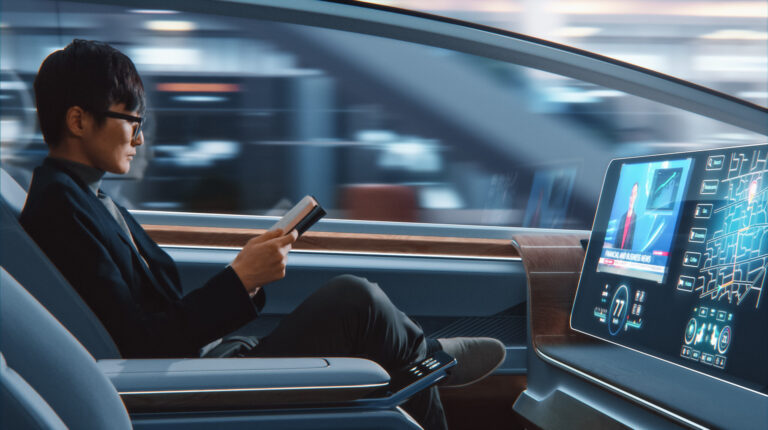A recent study conducted by the University of Nottingham for the RAC Foundation suggests that having a passenger present in semi-autonomous cars can improve drivers’ focus on the road and help them decide when to resume manual control. However, the transition back to manual driving remains challenging.
The study involved 17 motorists, each accompanied by a front-seat passenger, using a driving simulator programmed to mimic a Level 3 automated vehicle. L3 automation allows the vehicle to drive itself in certain situations, requiring the driver to take over in specific scenarios. The simulation included fully automated driving on freeway segments.
The presence of a passenger was found to be beneficial for providing directions and preventing drivers from falling asleep. Passengers encouraged drivers to maintain awareness even during automated driving periods. However, the study also noted that passengers could be a source of distraction, as occupants often engaged in conversations and used tech devices, sometimes to the extent of missing freeway exits.
Interviews with participants revealed that passengers were conscious of their potential to distract the driver and recognized the driver’s ultimate responsibility for vehicle control. Despite passenger support, drivers exhibited poor vehicular control immediately after resuming manual driving, characterized by erratic braking, accelerating and lane drifting. Researchers speculated that some exaggerated driving inputs might have been drivers’ attempts to demonstrate control to their passengers.
The study’s findings highlight the complexities of the human-machine interface in semi-autonomous vehicles. While fully self-driving cars aim to eliminate human error, semi-autonomous cars still require human intervention, raising questions about the effectiveness and safety of such technology during the transition phase. The research underscores the need for auto designers to develop systems that accommodate human behavior and potential distractions.
Steve Gooding, director of the RAC Foundation, emphasized the dual role of passengers in enhancing and potentially detracting from driver focus. He noted the importance of developing systems that account for human fallibility, especially during the handover process between automated and manual driving.
Dr David R Large, senior research fellow at the Human Factors Research Group at the University of Nottingham, pointed out the continued risk of distraction posed by passengers but also acknowledged their supportive role during manual takeovers. The study’s insights will inform future research and technological advancements to improve the safety of conditional automation in vehicles.
These findings come in the context of the Automated Vehicle Bill receiving Royal Assent on May 20, 2024, paving the way for fully autonomous cars on UK roads. Automated lane keeping systems (ALKS) – fully automated systems initially allowed at slow speeds – are already in use, although drivers still have full control in other situations.
The researchers say that the results of this study will contribute to understanding and addressing the challenges of integrating semi-autonomous vehicles into everyday road use.


